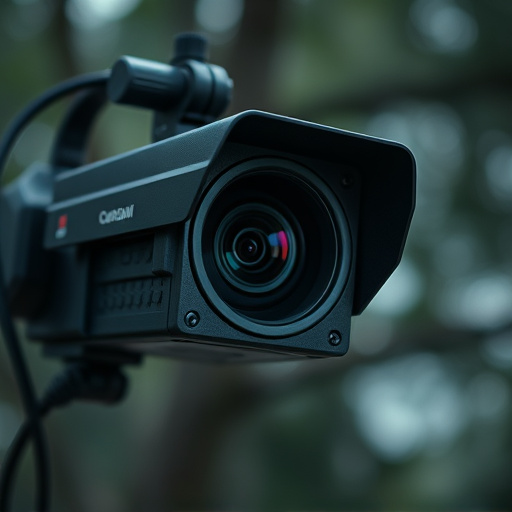Wireless Nanny Cam Live Streaming offers real-time video monitoring via internet, eliminating complex cabling. Users can access live feeds and record footage remotely through mobile apps, suitable for homes, offices, or businesses. Advanced techniques using light spectra analysis help detect hidden cameras, including Wireless Nanny Cams. Integration of these systems requires specialized equipment and regular testing to maintain accuracy. However, deployment raises serious legal and ethical concerns related to privacy invasion and trust erosion. Balancing privacy rights with security necessitates ongoing discussions and robust legal frameworks.
Uncover the hidden world of surveillance with our in-depth look at Wireless Nanny Cam Live Streaming—a modern approach to home protection. This article explores the innovative method of disguised camera identification using lights tests, delving into its science, practical implementation, and legal nuances. Discover how this technology is transforming personal safety, offering a discrete yet powerful tool for peace of mind. We’ll guide you through the process, from understanding wireless streaming to navigating ethical considerations.
- Understanding Wireless Nanny Cam Live Streaming: A Modern Surveillance Approach
- The Science Behind Disguised Camera Identification Using Lights Test
- Implementation: Equipment, Techniques, and Best Practices
- Legal Considerations and Ethical Implications of Hidden Camera Detection
Understanding Wireless Nanny Cam Live Streaming: A Modern Surveillance Approach
Wireless Nanny Cam Live Streaming offers a modern approach to surveillance, allowing users to monitor their surroundings in real-time from anywhere with an internet connection. This innovative technology has transformed traditional security systems by providing a discreet and accessible way to keep an eye on homes, offices, or any desired location. The term refers to the seamless transmission of video footage captured by hidden cameras, often known as “nanny cams,” over wireless networks.
This method eliminates the need for complex cabling, making it ideal for installation in various settings. Users can access live feeds and even record footage remotely via dedicated mobile apps. The accessibility and convenience it offers have made Wireless Nanny Cam Live Streaming a popular choice for parents checking on their children, homeowners ensuring property security, and businesses monitoring operations, all while maintaining a low-profile presence.
The Science Behind Disguised Camera Identification Using Lights Test
The process of identifying hidden cameras, like Wireless Nanny Cams that stream live, often involves sophisticated techniques leveraging light and its interaction with sensors. These tests are designed to detect subtle anomalies in lighting patterns that may indicate the presence of a camera. The science behind it delves into optics, photodetection, and signal processing.
Specialized equipment captures and analyzes light spectra, looking for irregularities that could suggest a camera’s lens or sensor disrupting natural light. This includes studying variations in illumination intensity, color balance, and even heat signatures. By combining these data with advanced algorithms, experts can create models to distinguish normal lighting conditions from those influenced by hidden cameras, enhancing security measures and privacy protection.
Implementation: Equipment, Techniques, and Best Practices
The implementation of a hidden camera identification system using light testing involves specialized equipment and precise techniques to ensure effectiveness and avoid detection. At the core, wireless nanny cam live streaming devices play a pivotal role, offering remote surveillance capabilities through internet-connected platforms. These cameras are meticulously designed to blend into their surroundings, making them nearly invisible to potential targets.
Equipment includes high-resolution cameras with infrared or UV lighting capabilities, allowing for optimal visibility in various lighting conditions. Techniques involve manipulating light sources and shadows to create unique patterns that can be identified by trained eyes or advanced software algorithms. Best practices emphasize regular testing and calibration of the systems to maintain accuracy, as well as staying updated on technology advancements to counter potential countermeasures employed by subjects under surveillance.
Legal Considerations and Ethical Implications of Hidden Camera Detection
The use of hidden cameras, especially wireless nanny cam live streaming devices, raises significant legal and ethical concerns. In many jurisdictions, capturing images or video without explicit consent is a violation of privacy laws. Even if a camera is not actively transmitting data, its presence can still be detected through specialized equipment, making it a potential breach of privacy for individuals unaware they are being monitored.
Ethical implications extend beyond legal boundaries. The mere existence of hidden cameras can erode trust in relationships, whether personal or professional. It invites a culture of surveillance, where people might feel their actions and conversations are not truly private. This has profound effects on mental health and social interactions, fostering an environment of fear and distrust. As technology advances, the challenge of balancing privacy rights with security measures becomes increasingly complex, necessitating ongoing dialogue and robust legal frameworks to address these concerns.
The hidden nature of wireless nanny cam live streaming poses unique challenges in surveillance. However, advanced techniques like disguised camera identification using lights tests offer promising solutions. By understanding the science behind these methods and implementing best practices, we can enhance privacy protection while navigating legal considerations and ethical implications. This evolving field underscores the importance of staying informed as technology continues to shape our surveillance landscape.
